Hedera Hashgraph: Redefining Distributed Ledger Technology

Disclaimer: Your capital is at risk. This is not investment advice.
Token Takeaway: HBAR;
Hedera is an open-source distributed ledger that allows for creating dApps and services on the platform. It employs an innovative DAG-based consensus mechanism called Hashgraph that facilitates remarkable network efficiency and cost-effectiveness, allowing the network to achieve high-performance outcomes. This Token Takeaway examines the fundamentals of Hedera, the workings of Hashgraph, and the value proposition of its native token, HBAR.
Overview
Hedera is a next-generation public ledger that aims to address the shortcomings of traditional blockchain networks. Headquartered in Texas, Hedera Hashgraph was co-founded by Dr. Leemon Baird and Mance Harmon. Baird is a former computer science professor at the United States Air Force Academy and the mastermind behind the Hashgraph consensus. Together with Harmon, Baird co-founded Swirlds in 2015, a company that owns the patents for Hashgraph. In 2017, the duo introduced the Hedera Network before launching its mainnet in August 2018.
Currently, Hedera boasts more than 3.3 million mainnet accounts, contributing to a cumulative of 16.1 billion transactions processed on the network in just the past year. The network has consistently upheld an average transactions-per-second (TPS) rate of 518.5 in the last 365 days, and at its peak, it has surpassed 10,000 TPS in the same period.
As of today, Hedera has successfully secured a total funding of $125.5m through a combination of an initial coin offering (ICO) and multiple rounds of investment from prominent entities such as IBM, Boeing HorizonX Ventures, and Tata Consultancy Services (TCS).
Hashgraph Consensus Algorithm
Hedera is not a blockchain in the traditional sense of being built on a linear chain of blocks. It is structurally quite different from the Bitcoin and Ethereum blockchains but provides similar functionalities and is able to achieve improved transaction processing speeds, enhanced security and near-instant finality. It does that by using a unique consensus algorithm called Hashgraph.
Blockchain vs Hashgraph
Blockchain and Hashgraph are both distributed ledger technologies but utilise different approaches to achieving decentralised consensus. On a blockchain, transactions are grouped into blocks, and these blocks are linked together in a linear chain. Each block contains a batch of transactions, and these blocks are linked together in chronological order to form a chain of blocks.
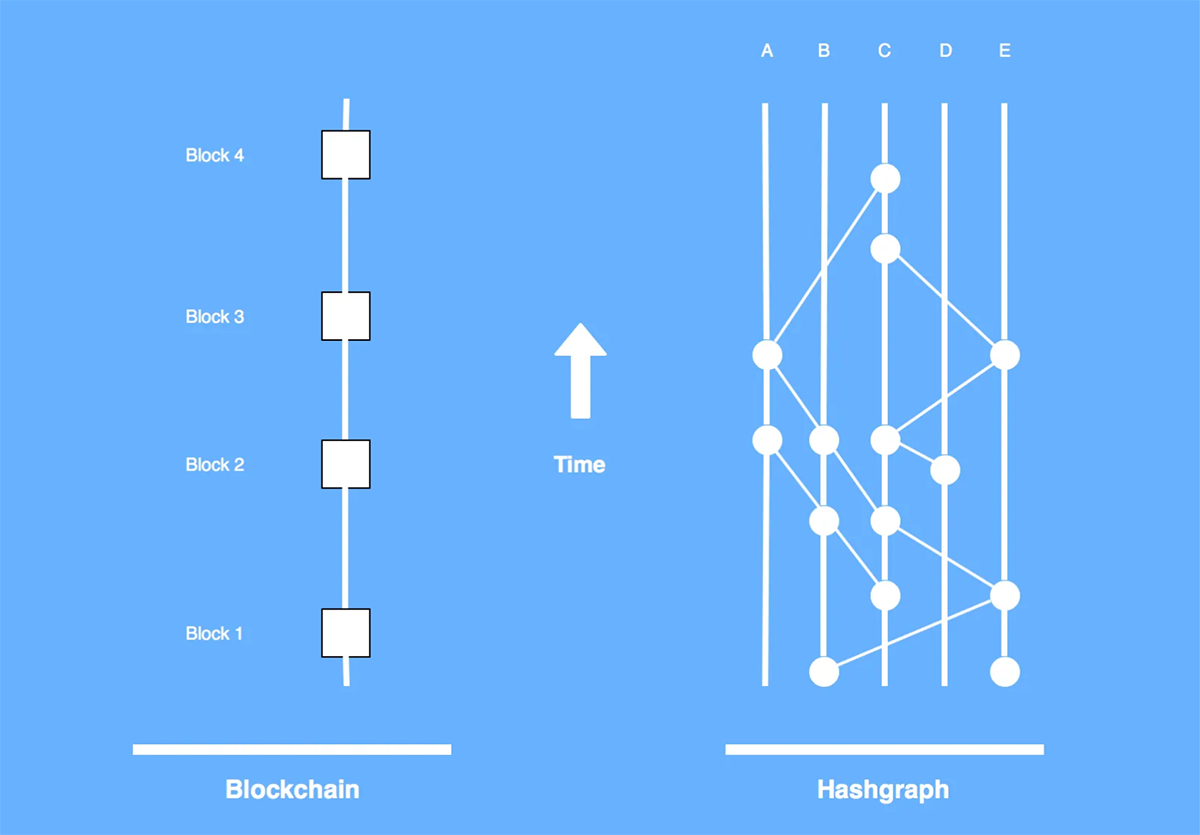
In contrast, Hashgraph uses a more intricate structure where transactions are linked to each other in a Directed Acyclic Graph (DAG) structure, where each node in the network maintains its own hashgraph of transactions. In a sense, this process forms a graph-like structure of transactions and associated data.
How Does Hashgraph Work
The Hashgraph algorithm is a very complex mechanism and has a lot going on under its hood. It is a challenge for even tech professionals to fully understand its technical functionality. In this section, I’ll attempt to explain it in simple words.
In short, Hashgraph relies on two protocols to achieve consensus: Gossip about Gossip and Virtual Voting.
Gossip about Gossip
This involves nodes sharing their own information (transaction data) and/or the information they've received from other nodes.

Nodes not only share the information (transactions) they have initiated but also share information about the transactions they've received from other nodes. This process enables the nodes to efficiently broadcast information across the network in a cascading manner. This allows all the nodes to build a complete history of transactions and their associated timestamps (Hashgraph).
Virtual Voting
Nodes in the network continuously participate in rounds of voting without having to send out any additional messages or requests. This is made possible by the Gossip about Gossip protocol, which allows each node to already be aware of what the other node knows, meaning they can predict what the other nodes would vote. In essence, nodes do not physically submit votes. Instead, they use the information about the transactions and the timestamps associated with them. Now, the nodes can effectively determine which transactions have been witnessed by a supermajority of nodes and at what time. This allows them to establish a consensus on the order and validity of transactions. It’s also what makes the impressively high TPS possible.
For a visual explanation of how the Hashgraph Consensus Algorithm works, watch this video by Dr. Leemon Baird.
Hashgraph isn't the sole DAG-based consensus system in the space. A notable example is Lachesis, a DAG-based consensus algorithm employed by the Fantom Network, which we’ve covered in depth in a previous Token Takeaway.
Hedera Network Architecture
At the heart of the network lies the Hashgraph consensus. By leveraging the Hashgraph, Hedera offers consensus, token and smart contract services. Developers can utilise these services to build dApps using Hedera’s developer-friendly APIs and native SDKs.
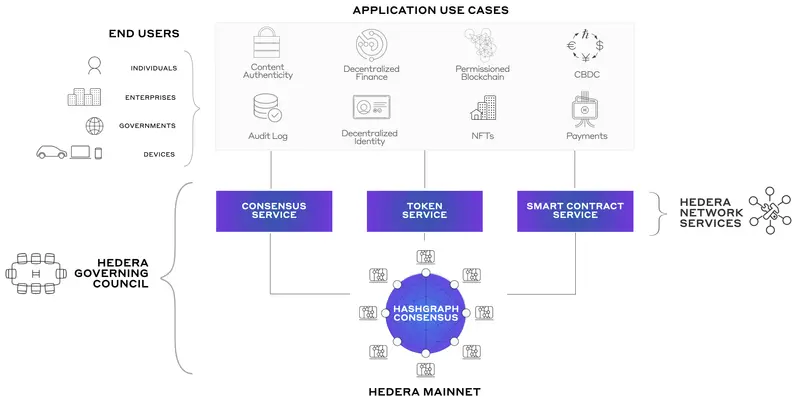
The Hedera smart contract services support the Ethereum-native programming language, Solidity. It also offers Besu EVM compatibility, allowing the dApps built on the network to achieve higher throughput and low, predictable fees. The consensus services provide high levels of security, decentralisation and encrypted storage of information onto the ledger.
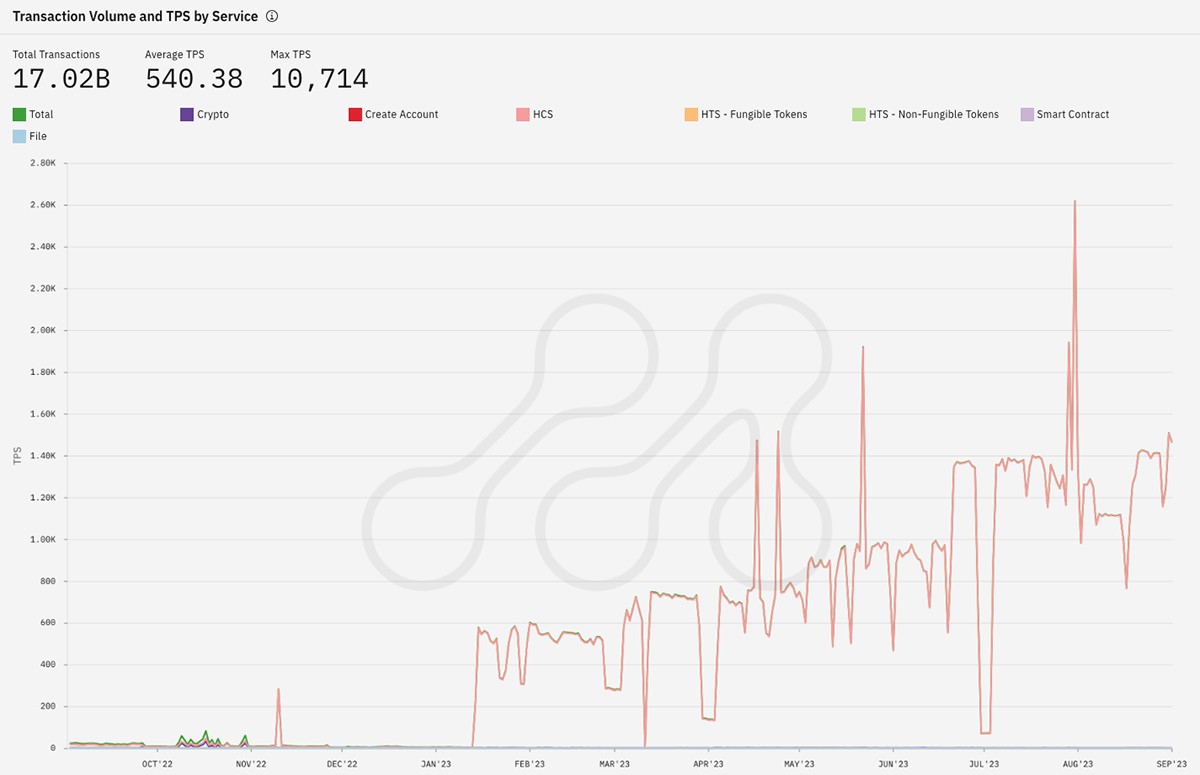
As illustrated in the above chart, the pink line, representing the transactions on the Hedera Consensus Service (HCS), shows volatile but consistent growth since January 2023.
The Hedera network is governed by a body of global organisations called the Hedera Governing Council. The council consists of large corporations, Web3 projects and universities. It aims to ensure a decentralised governance structure where all participants are fully committed to network innovation and stability.
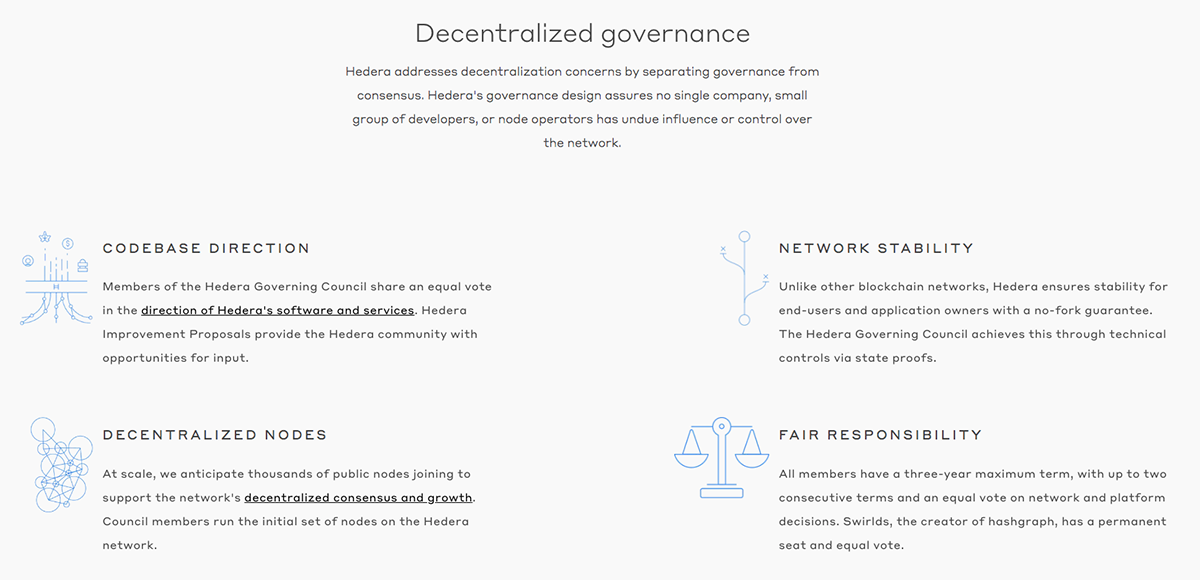
The governance council consists of many well-known global institutions, including Google, DELL, IIT Madras, LG and DBS.
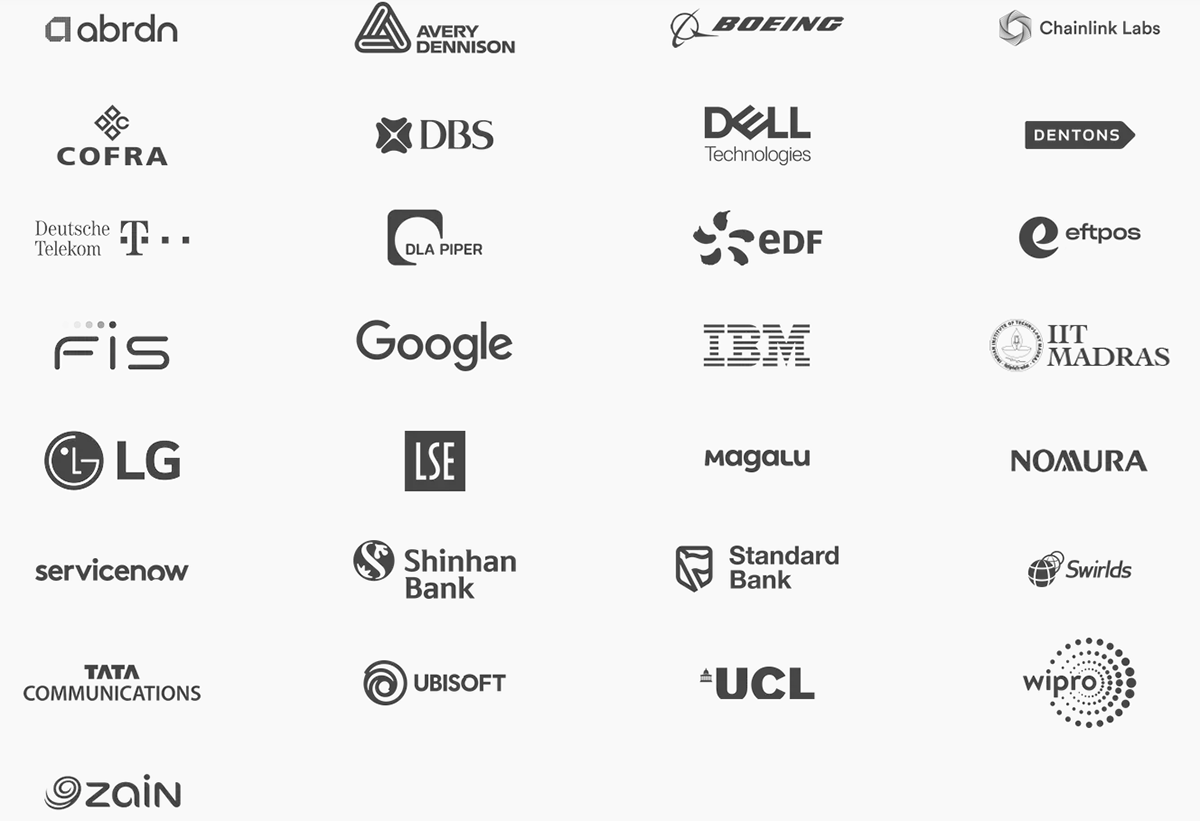
These entities are also responsible for running and maintaining the network’s validator nodes. Although Hedera claims that its governance structure is fully decentralised, it limits individuals and organisations outside of the council to set up a node. However, all the governance processes are transparent for everyone to see.
